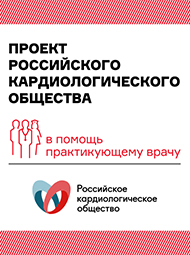Younger, older HF patients require different disease management
NEW ORLEANS — Although younger patients represent one third of all HF hospitalizations, they are poorly represented in clinical trials, and more research is needed to learn which strategies improve readmission and mortality in this population, according to researchers.
Results from a longitudinal study of patients with HF revealed at the American Association of Heart Failure Nurses annual meeting demonstrate care utilization differences between age groups and suggest further investigation comparing patients over and under age 65 years is required.
“We’re noticing a larger population of young patients with HF,” Connie Lewis, MSN, ACNP-BC, NP-C, CCRN, CHFN, of Vanderbilt Medical Center, Franklin, Tenn., AAHFN president, told Healio.com.
“It is important to raise the awareness that this population of patients is out there. These young people are different; they are trying to work full-time jobs and raise their families — and now they have a devastating disease.”
Lewis and colleagues looked at a cohort of adults (aged ≥ 20 years, 58% men) admitted to Vanderbilt with acute HF to examine incidence rate, characteristics, hospitalizations and mortality. Patients’ administrative and clinical information was integrated across data collection and assessment tools; 1,066 encounters with 793 patients were tracked.
The researchers compared younger age groups (aged < 65 years) and older age groups (aged ≥ 65 years). They incorporated various electronic tools to improve clinical practice and identified clinical characteristics.
Nearly half (48%) of the cohort was younger; men with HF were more likely aged 20 to 29 years and 60 to 79 years (P < .04). The median length of hospital stay was 5 days; younger patients stayed longer than older patients (P < .0001).
Based on university health system consortium criteria, 75% of patients had major or extreme HF diagnoses; younger patients were more likely to be in the latter category. Overall mortality was 5.3%, with a lower rate among younger patients vs. older patients.
Left ventricular ejection fraction (LVEF) of less than 40% at discharge was observed in 52% of the entire cohort. The incidence was 56% in the younger group and 48% in the older group (P < .0116); further LVEF was 36% and 39%, respectively, (P < .0019).
Overall 30-day readmission for any cause was 18%. This rate was also higher among younger patients than older patients (20% vs. 16.7%, P = .13), with the rates among patients aged 30 to 39 years (36%) and those aged 60 to 69 years (21%) higher than the overall cohort (P = .069).
Younger patients were more likely to have systolic BP below 90 at discharge (P > .05). Additionally, the younger group was less likely to receive IV diuretics, statin and beta blockers, but more likely to receive ace inhibitor and aldosterone antagonist treatments.
Viral cardiomyopathy, improved survival for repairs of congenital defects, residual effects of chemotherapy for childhood cancer, and obesity and its related comorbidities are all factors that increased the risk for HF among the younger population.
“Our next step is figuring out what to do differently to support these patients,” Lewis said. “It will mean being more flexible with office visits and providing new resources. We’re going to email or text to take care of these patients.” – by Allegra Tiver
Reference: Lewis C, et al. Poster 11P. Presented at: American Association of Heart Failure Nurses Annual Meeting; June 25-27, 2015; New Orleans.
Disclosure: Lewis reports no relevant financial disclosures.
Source: www.healio.com






